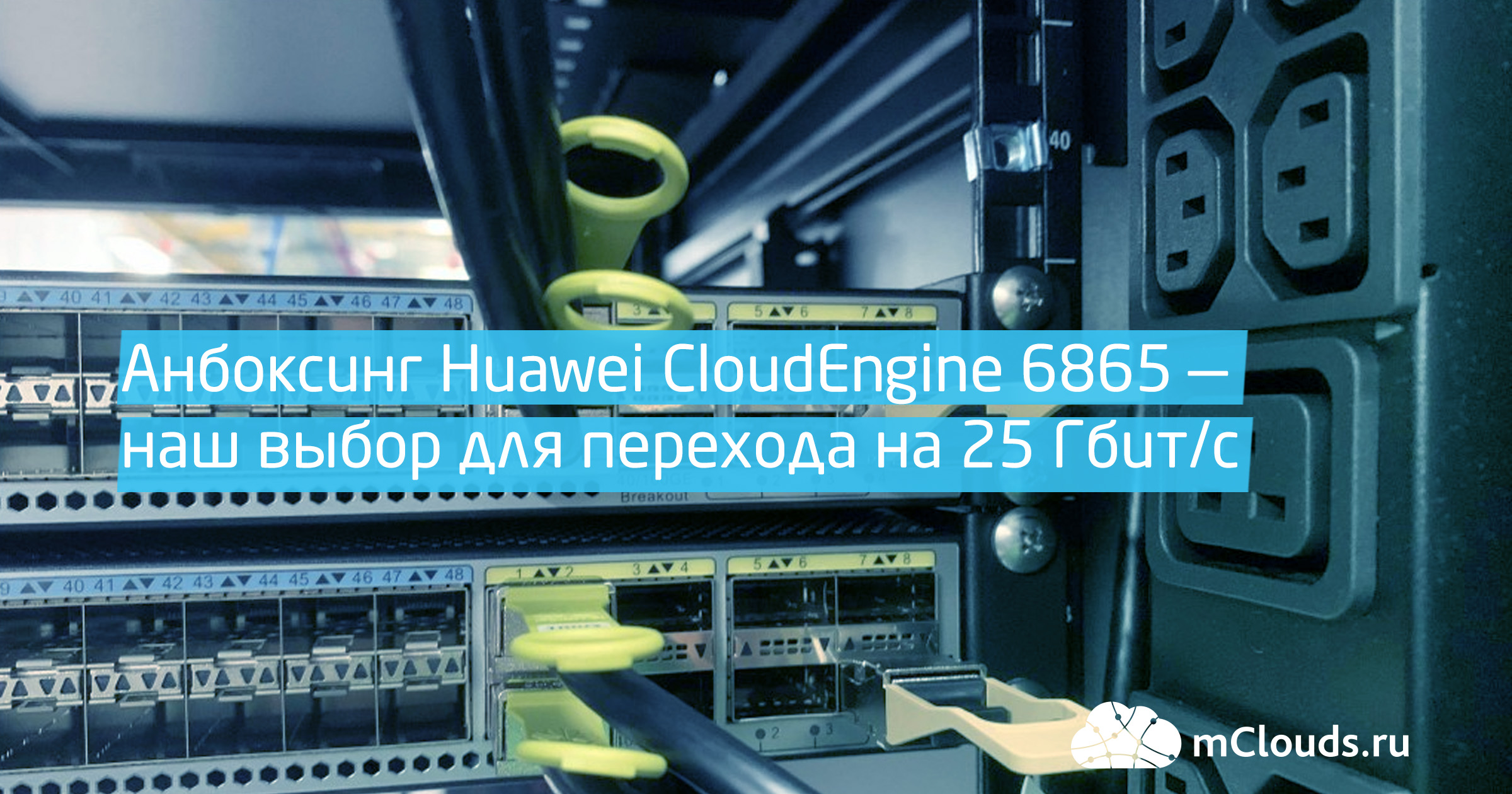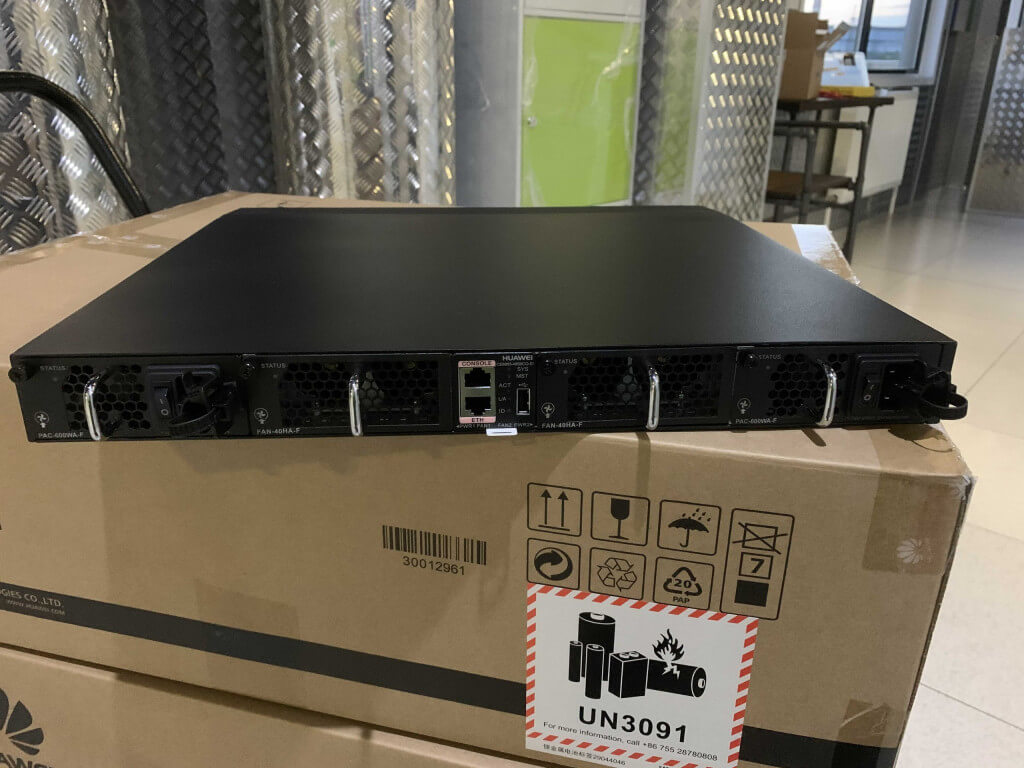
With the growth of the mClouds.ru cloud infrastructure , we needed to put into operation new 25 Gbps switches at the server access level. We will tell you how we chose the Huawei 6865, unpack the equipment and tell us our first impressions of operation.
Shaping Requirements
Historically, we have had positive experiences with both Cisco and Huawei. We use Cisco for routing, and Huawei for switching. At the moment we are using CloudEngine 6810. Everything is fine with it - the equipment works properly and predictably, and the cost of implementation is cheaper than analogues from Cisco and other vendors. By the way, we have already written about the 6800 series earlier .
It is logical to continue using this bundle further, but we need a more powerful solution - expanding the network up to 25 Gbps per port, instead of the current 10 Gbps.
The rest of our requirements: uplinks - 40/100, non-blocking switching, performance matrix, L3 support, stacking. From the desired perspective: support for Leaf-Spine, VXLAN, BGP EVPN. And, of course, the price - the cost of operation affects the final cost of the cloud for our clients, so it is important to choose an option with a good price-quality ratio.
Selection and commissioning
When choosing, we settled on three manufacturers - Dell, Cisco and Huawei. As already mentioned above, we try to use partners that have already been tested by time, and we have a good idea of how their equipment behaves and how the service works.
The following models were suitable for our requirements:
But after a short comparison, we settled on the first option. A number of factors influenced here: the attractive price, full compliance with our requirements and the smooth operation of the previous models of this manufacturer. Resolved, boldly order a batch of CE 6865. We

compared, ordered and finally received new switches.
And now the batch arrived at the data center. We open it and at first glance we see practically no visual differences from the 6810 we used. The only thing that is noticeable is that the new version has a larger number of uplinks and ports of a different type (SFP28 and QSFP28, instead of SFP + and QSFP +, respectively), which will allow us to increase the network speed up to 25 Gb / s instead of 10 Gb / s for SFP28 and up to 100 Gb / s instead of 40 Gb / s for QSFP28.

Installing switches in a new rack
Operating experience
As a result, during the month of operation of the new switches, no problems have been identified, the equipment operates smoothly. However, when choosing Huawei, you need to be prepared for the fact that some users will take time to get used to the interface of their operating system.
In our opinion, the Huawei VRP interface is somewhere between IOS and Comware. And here it will be easier if you worked with Comware from HPE, but for Cisco users, on the contrary, it will be more difficult. Of course, this is not critical, but it is also worth considering when choosing equipment.
Experience with Huawei switching for over 4 years, leaves no doubt about the choice. CloudEngine 6885 is not inferior to the solutions of competitors in technical terms, pleases with its price and allows us to provide us with reliable cloud solutions for our customers.
We are happy to answer your questions about hardware and clouds in the comments. We will also tell you more about setting up CloudEngine 6885 in one of the following articles - subscribe to our blog so as not to miss it.